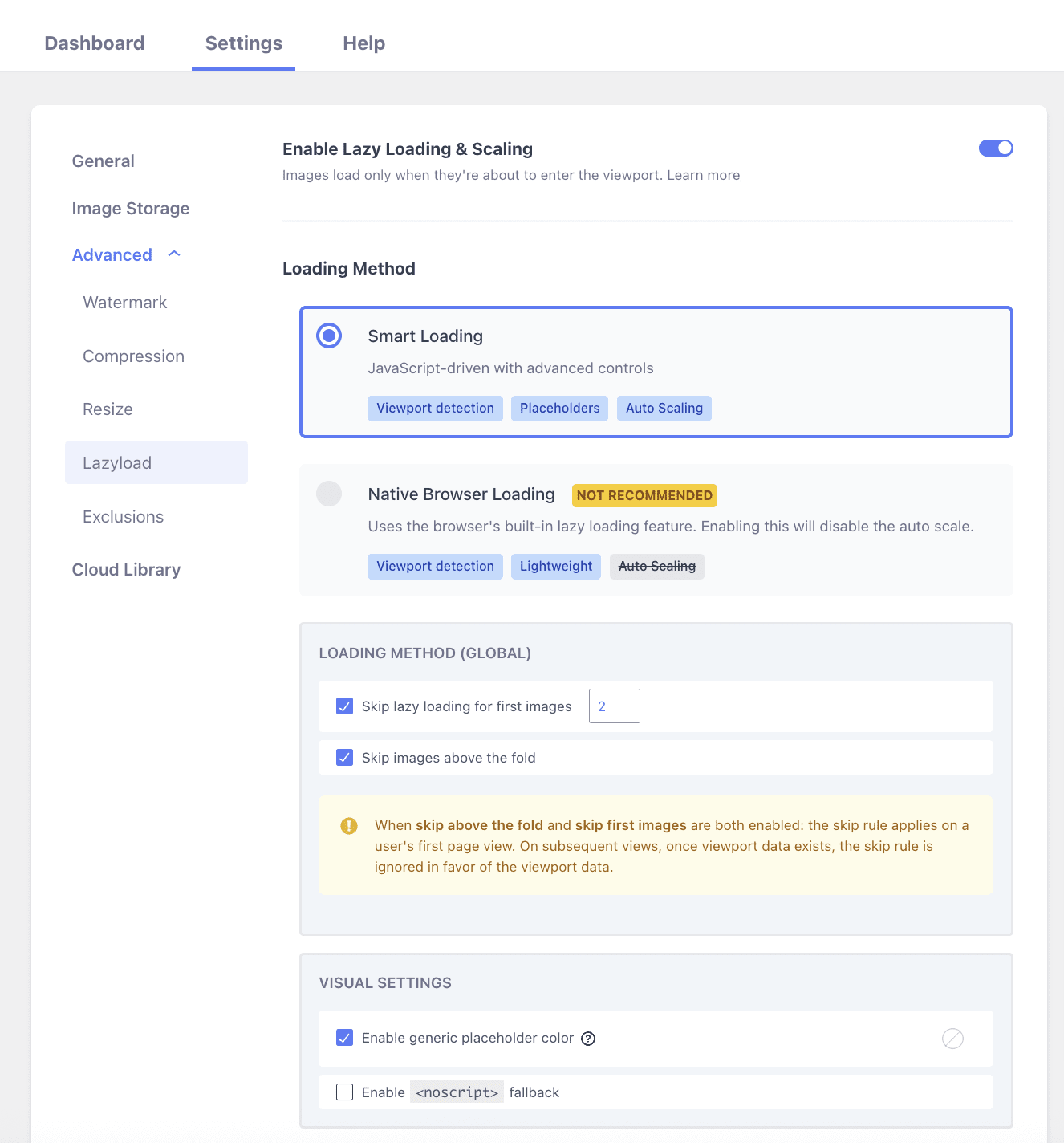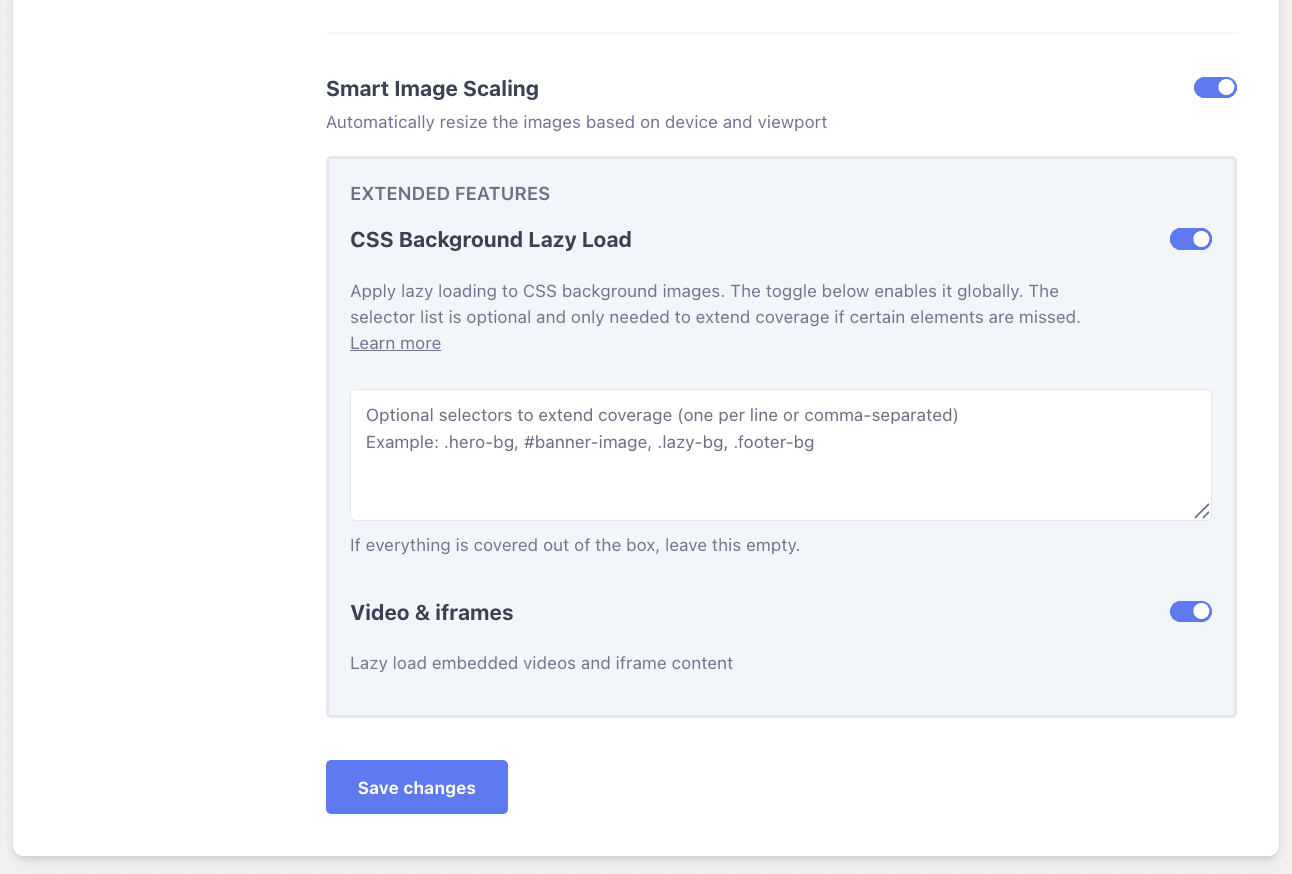CSS Background Lazy Loading
Optimole’s CSS Background Lazy Loading feature is a smart tool that optimizes your website without any hassle. When activated, it waits to load background images until they're just about to appear on your screen. This intelligent strategy makes your website load faster, creating a seamless experience for your visitors.
| Enable the Feature |
User Site and Image Impact |
| Related Settings |
Use Cases |
| Benefits and Trade-offs |
Useful Resources |
| 🎥Video - Lazy-load Explained: How to Optimize Your Webpages for Maximum Speed |
|
🔌 Enable the Feature
To enable this feature, navigate to WP Dashboard > Optimole.
- 1
-
Open the Settings tab.
- 2
-
Expand the Advanced accordion and open the Lazyload panel.
- 3
-
Use the toggle to enable CSS Background Lazy Load.


🚀 User Site and Image Impact
Lazy loading of CSS image backgrounds speeds up websites by loading these images only when users scroll to the relevant sections, enhancing overall performance and user experience.
Once enabled, it identifies background images and applies the optml-bg-lazyloaded CSS class to ensure you their lazy loading.
Usually, Optimole does this automatically. However, some plugins might cause problems because they are not fully compatible. If you encounter issues with certain plugins, you can manually fix them by adding specific details in the provided Extend CSS Background Lazy Loading area.

For example, if you have background images on HTML tags that contain the class my_class_for_image you would add the following CSS selector .my_class_for_image, and if you also have tags that have background images and have the following id: my_id, you add the selector: #my_id, like this:
📝 Note: A complete list of available CSS selectors and their meanings can be found here.
🔄 Benefits and Trade-offs
Benefits
- Faster page loading - lazy loading backgrounds speed up initial page load times by deferring the loading of images until they're about to be displayed.
- Improved user experience - users experience quicker access to content, reducing frustration associated with slow-loading pages and improving overall satisfaction.
- Bandwidth conservation - lazy loading conserves bandwidth by loading images selectively, saving data for users, and reducing server load.
Trade-offs
- Potential flickering - lazy loading might cause images to flicker or appear late if not implemented correctly, affecting the user experience negatively.
🧩 Use Cases
The feature can be very advantageous for multiple use cases, such as:
- Long web pages - websites with long content benefit as lazy loading ensures faster initial loading, improving user experience as visitors scroll through the content.
- Image-intensive websites - websites with numerous background images, such as portfolios, galleries, or product catalogs, can significantly reduce loading times by lazy loading these images.
⚙️ Related Settings
- Extend CSS Background Lazy Loading - becomes available when enabling the CSS Background Lazy Loading
🗂Useful Resources
You may find useful these guides:
- Lazy Loading Images: Complete Guide Plus 3 Ways to Implement It
- Free Images for Blogs – How to Get Them & Use Them Effectively (Warning! Non-Obvious Advice, Data-Backed)
🎥Video - Lazy-load Explained: How to Optimize Your Webpages for Maximum Speed
Still looking for an answer? Contact us!

